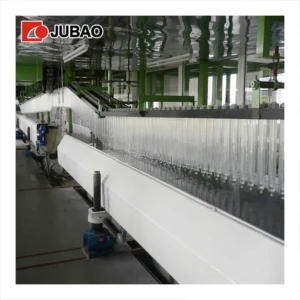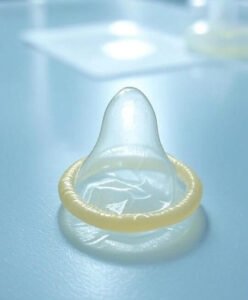How Much Does It Cost to Manufacture a Condom?
Table of Contents
Manufacturing Overview
The global condom market represents a multi-billion dollar industry, with manufacturers constantly seeking to optimize production costs while maintaining the highest safety standards. Understanding the true cost of condom manufacturing involves examining multiple factors, from raw materials to sophisticated machinery investments.
Modern condom production relies heavily on advanced condom manufacturing machine technology, which has revolutionized the industry’s efficiency and quality control processes. The manufacturing cost per unit typically ranges from $0.02 to $0.15, depending on various factors including production volume, material quality, and manufacturing location.
Raw Material Costs
Natural Latex Expenses
Natural rubber latex remains the primary material for condom production, accounting for approximately 40-50% of total manufacturing costs. The price of latex fluctuates based on global market conditions, seasonal variations, and supply chain dynamics.
Current latex costs range from $1,200 to $2,000 per metric ton, with premium grades commanding higher prices. A single condom requires approximately 0.6 to 0.8 grams of latex, translating to raw material costs of $0.001 to $0.0016 per unit for the latex component alone.
| Material Type | Cost per Metric Ton | Usage per Condom | Cost per Unit |
|---|---|---|---|
| Standard Natural Latex | $1,200 – $1,500 | 0.6 – 0.8g | $0.0007 – $0.0012 |
| Premium Natural Latex | $1,800 – $2,000 | 0.6 – 0.8g | $0.0011 – $0.0016 |
| Synthetic Materials | $2,200 – $3,000 | 0.5 – 0.7g | $0.0011 – $0.0021 |
Synthetic Alternatives
Synthetic materials like polyurethane and polyisoprene offer alternatives for latex-sensitive consumers. These materials typically cost 20-40% more than natural latex but provide enhanced sensitivity and reduced allergic reactions. The higher material costs are often offset by premium pricing in the market.
Condom Manufacturing Machine Investment
Types of Manufacturing Equipment
The heart of any condom production facility is the condom manufacturing machine system. Modern production lines consist of several integrated components:
Dipping Machines: These form the core of the manufacturing process, where aluminum molds are dipped into latex compound. High-capacity dipping lines can cost between $500,000 to $2 million, depending on automation levels and production capacity.
Vulcanization Ovens: Essential for curing the latex, these ovens represent a significant investment of $200,000 to $800,000. Energy-efficient models with precise temperature control command premium prices but offer long-term operational savings.
Key Manufacturing Equipment Costs:
• Complete automated production line: $3-8 million
• Semi-automated systems: $1.5-4 million
• Basic manual systems: $300,000-1 million
Automation and Technology Costs
Modern condom manufacturing machine installations incorporate sophisticated automation systems that significantly impact both initial investment and operational efficiency. Fully automated lines can produce 1,000-3,000 condoms per hour per mold, compared to 200-500 units for manual systems.
The additional investment in automation typically adds $1-3 million to the base equipment cost but reduces labor requirements by up to 60% and improves consistency in product quality.

Production and Labor Costs
Labor costs vary significantly based on manufacturing location. In developing countries, labor represents 15-25% of total manufacturing costs, while in developed nations, this can reach 35-45%. Skilled operators for condom manufacturing machines command higher wages due to the technical expertise required.
Utility costs, including electricity and water, typically account for 8-12% of total production costs. Energy-efficient manufacturing equipment can reduce these costs by 20-30% over the equipment’s operational lifetime.
Quality Control and Testing
Regulatory compliance and quality assurance represent critical cost components. Every condom must undergo multiple testing procedures:
Electronic Testing: Each unit undergoes electronic pinhole detection, adding approximately $0.002-0.005 per condom in testing costs.
Physical Testing: Random sampling for tensile strength, elongation, and burst pressure testing contributes an additional $0.001-0.003 per unit when distributed across production volumes.
Quality control equipment investment ranges from $150,000 to $500,000 for a complete testing facility, depending on production capacity and automation levels.
Packaging and Distribution
Primary packaging (foil wrapper) costs range from $0.008 to $0.015 per unit, while secondary packaging (boxes, displays) adds another $0.005 to $0.012 per condom. Premium packaging designs and materials can increase these costs by 50-100%.
Lubrication application, when required, adds approximately $0.003 to $0.008 per unit, depending on the type and quantity of lubricant used.
Total Manufacturing Cost Analysis
Consolidating all manufacturing components, the total cost structure breaks down as follows:
| Cost Component | Percentage of Total | Cost per Unit |
|---|---|---|
| Raw Materials | 25-35% | $0.005 – $0.025 |
| Labor and Operations | 20-30% | $0.004 – $0.020 |
| Equipment Depreciation | 15-25% | $0.003 – $0.018 |
| Quality Control | 8-15% | $0.002 – $0.012 |
| Packaging | 12-18% | $0.006 – $0.015 |
| Utilities and Overhead | 8-12% | $0.002 – $0.010 |
The total manufacturing cost typically ranges from $0.020 to $0.150 per condom, with the wide variation primarily attributed to production volume, automation levels, and geographic location.

Market Factors Affecting Costs
Several external factors significantly influence manufacturing costs:
Production Volume: Large-scale manufacturers producing over 100 million units annually achieve costs at the lower end of the spectrum through economies of scale. The initial investment in high-capacity condom manufacturing machine systems becomes more economical when distributed across large production volumes.
Regulatory Environment: Stringent regulatory requirements in developed markets increase testing and compliance costs but often command premium pricing that offsets these expenses.
Raw Material Volatility: Latex price fluctuations can impact costs by 15-30%, making supply chain management crucial for maintaining consistent margins.
Conclusion
The cost to manufacture a condom involves a complex interplay of factors, with the most significant investments occurring in advanced condom manufacturing machine technology and quality assurance systems. While the per-unit manufacturing cost may seem modest at $0.02-0.15, the substantial upfront capital investment and ongoing operational requirements make condom manufacturing a capital-intensive industry.
Manufacturers who invest in modern automation and quality control systems position themselves for long-term success in an increasingly competitive global market. The key to profitability lies in achieving optimal production volumes that justify the significant machinery investments while maintaining the highest quality standards demanded by consumers and regulatory bodies.
As technology continues to evolve, future developments in condom manufacturing machine efficiency and smart manufacturing processes promise to further optimize costs while enhancing product quality and safety standards.
